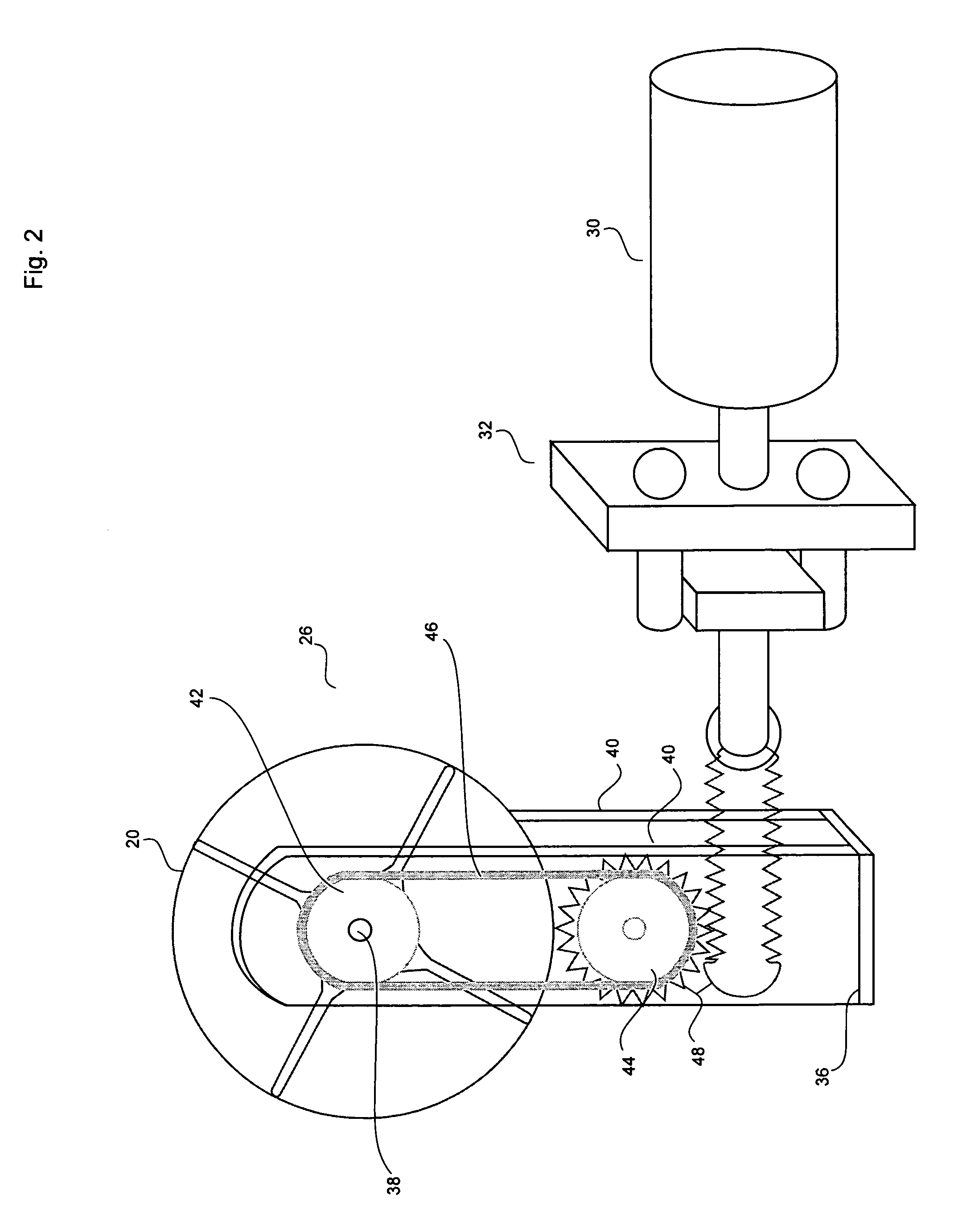Method and apparatus for weighing divided portions
a technology of divided portions and apparatus, applied in auxillary shaping apparatus, manufacturing tools, instruments, etc., can solve the problems of inability to determine projections, inaccuracy of measured weight, and introduction of weight indication errors, so as to achieve high production rates
- Summary
- Abstract
- Description
- Claims
- Application Information
AI Technical Summary
Benefits of technology
Problems solved by technology
Method used
Image
Examples
Embodiment Construction
[0036]FIG. 1 is an illustration of an apparatus for implementing the method of the present invention. As illustrated in FIG. 1, dough portions are produced by the dough production mechanism 10. The portions of the dough 12 are released onto a first conveyor belt 14 or other conveyor mechanism to transport the dough portions for weighing and further processing. A flour sifter 16 is preferably located above the conveyor belt 14 to disperse flour particles along the upper surface of the conveyor belt 14 in order to prevent adhesion of the dough portions 12 to the conveyor belt 14.
[0037]As the dough portion travels past the end of the first conveyor belt 14, the portion is carried by inertia and gravity down ramp 18 into the uppermost chamber of the rotating receptacle 20 on weigh station 22 for weighing. The analog weight indications generated by the load cell of the weigh station 22 are converted by A / D converter 24 of the weight signal processor 26 and input into the data processor 2...
PUM
| Property | Measurement | Unit |
|---|---|---|
| length | aaaaa | aaaaa |
| weight | aaaaa | aaaaa |
| weight | aaaaa | aaaaa |
Abstract
Description
Claims
Application Information
 Login to View More
Login to View More - R&D
- Intellectual Property
- Life Sciences
- Materials
- Tech Scout
- Unparalleled Data Quality
- Higher Quality Content
- 60% Fewer Hallucinations
Browse by: Latest US Patents, China's latest patents, Technical Efficacy Thesaurus, Application Domain, Technology Topic, Popular Technical Reports.
© 2025 PatSnap. All rights reserved.Legal|Privacy policy|Modern Slavery Act Transparency Statement|Sitemap|About US| Contact US: help@patsnap.com



